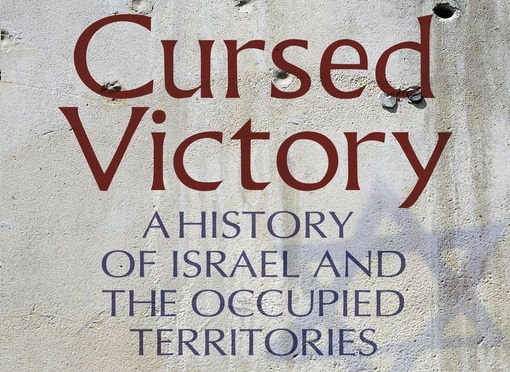Cursed Victory: A History of Israel and the Occupied Territories

While serving as a young Israel Defence Force officer in Gaza in the 1970s, Ahron Bregman became acutely aware of the occupation. Later, while on an overseas holiday, he was outraged by reports of Israeli brutality in suppressing the first Palestinian intifada, and on his return to Israel, refused to serve in the occupied territories as a reservist. He left Israel for England where he still lives and now teaches at King’s College, London.
Israel did not fight the Six-Day War of 1967 for territorial gain; rather, it viewed the hostile stance of its Arab neighbours as presenting an existential threat to the Jewish state. Nonetheless, as a result of its victory, Israel increased its territory by a massive 200% which not only gave it strategic depth but also brought nearly a million Arabs under its direct control. Initially, Israel was prepared to relinquish almost all of this territory in return for peace but at the Khartoum summit of September 1967, the Arab League issued its infamous ‘three no’s’: no recognition, no negotiation and no peace with the Zionist entity. So Israel held on to territories it had occupied and despite all that has happened in the intervening half-century, continues to do so.
This occupation has defined the trajectory of Israel’s recent history and, according to Bregman’s, has changed the country’s character very much for the worse, thus turning the victory of 1967 into a curse. His book traces the development of the occupation from the early days under a government that wasn’t quite sure of what to do with its newly acquired territories and its largely hostile population. He considers the years of increasing Israeli settlement in the occupied territories (with the ideological blessing of the Begin and Shamir governments) which also saw the withdrawal from Sinai and peace with Egypt. He covers the first intifada and the tortuous diplomatic route through Madrid, Oslo and Camp David which resulted in the establishment of a Palestinian Authority over a much diminished territory but without achieving a lasting peace. Finally, he looks at the Sharon years which began with the al Aqsa intifada, the building of the separation wall and ended with the Israeli withdrawal from Gaza in 2007.
Although this is a 2014 publication, Bregman’s history finishes at 2007, which is disappointing since much has happened in the intervening years including two major Israeli offensives against Gaza. He does, however, offer an afterword in which he declares that ‘the verdict of history will regard the four decades of occupation…as a black mark in Israeli…history’ and believes that the occupation has in fact been a failure for Israel and will eventually come to an end.
Although it touches on the harsh reality of the occupation for the occupied and the brutality of the occupiers, this is foremost a political history with an emphasis on the various negotiations between the Israelis and Arabs in regards to the occupied territories. Thus, there are comprehensive sections on the negotiated Israeli withdrawal from Sinai, the tentative but ultimately fruitless discussions with Syria over the Golan Heights, the talks that led to the famous Rabin-Arafat handshake on the White House lawn and the failed ‘final settlement’ meetings between Barak and Arafat.
Yet Bregman fails to explain why, despite its signing of UN withdrawal resolutions, and in the face of increasingly hostile global public opinion leading to its increased isolation in public fora, Israel still holds on to these territories. At the expense of his political narrative, he pays far too little attention to the issue of Jewish settlement in the occupied territories. The Six-Day War may have indeed become a cursed victory but it was the trauma of the Yom Kippur War of 1973 that really began to drive the settlement agenda. The near defeat of that conflict came at the cost of a great many Israeli lives, not just in the war itself but in suicides in the months which followed. Many Israelis sought solace in a fundamentalist revival in which the erstwhile security-based occupation of Judea, Samaria and Gaza morphed into a historico-religious imperative, an imperative that has become a central tenet of Israeli policy.
Nonetheless, despite their massive expansion and increased entrenchment, the settlers in the occupied territories still constitute a minority, albeit an extremely powerful political one. Surprisingly, given Bregman’s avowed position, he makes no mention of the large, but seemingly politically impotent, Israeli opposition to the government’s agenda as represented by organisations such as Peace Now.
These criticisms aside, Cursed Victory is a highly readable account and should become a very useful textual reference for both the student and the lay reader.
Ahron Bregman, Cursed Victory: A History of Israel and the Occupied Territories, London: Allen Lane, 2014.
Reviewed by Dr James Anderson, Formerly of the School of Politics and International Relations, Flinders University.




